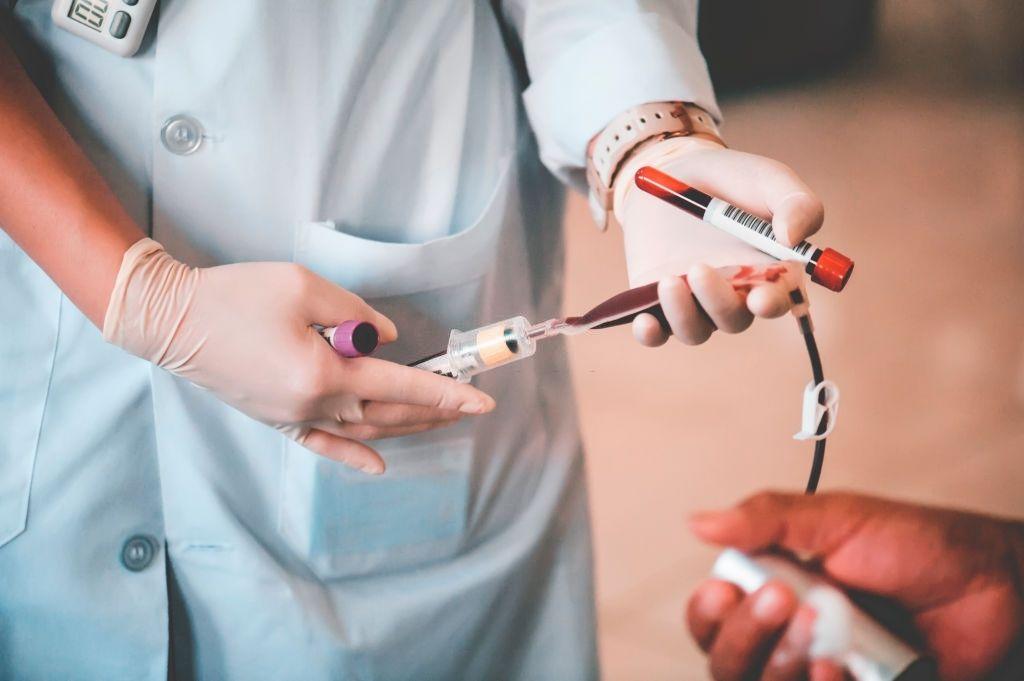Phlebotomy: Let us Acquaint Ourselves with it:
- The techniques for phlebotomy involve surgical opening or single puncture in a blood vessel using a needle
- This procedure is done to withdraw blood usually from your arm.
- It is an important tool for diagnosing many medical conditions.
- The professional who performs this procedure is a Phlebotomist.
Steps for an Efficient Sample Collection
Below is the stepwise technique for phlebotomy for successful sample collection every time.
Appropriate and Comfortable Location-
It should be quiet, clean, and well-lit.
Clearly Defined Instructions-
Indications for sampling should be clearly defined.
Sterilization-
- Wear well-fitting gloves and protective equipment
- These elements act as a barrier protection
Prepare the Patient-
- Accurate identification of the patient
- Check for any allergies or phobias
- Discuss the test to be performed
Locate and Disinfect the Site-
- Inspect the site for puncture
- Locate an appropriate vessel
- Wipe with 70% alcohol swab for 30 seconds
- Allow complete drying of the site
Draw Blood-
- Various techniques for phlebotomy employed for drawing blood are:
- Arterial blood sampling-
When blood is drawn from an artery.
2. Capillary method-
- The sample is collected from the finger, heel or rarely the earlobe
- There is a low risk of any injury
3. Venipuncture-
- The most widely used technique for phlebotomy.
- The blood is drawn from a vein.
- This process aids in blood transfusions.
- It also aids in administering medication through the intravenous route.
For understanding the procedure in detail please read our article on “What is venipuncture? Why is it important for phlebotomists?“
4. Fill up sample tubes-
- Keep multiple tubes of blood samples in a rack
- Invert the tubes containing additives the number of times as mentioned
5. Complete procedure-
- Clean all the contaminated surfaces
- Discard the used needle into a puncture-resistant container
- Inform the patient once the procedure is over
6. Prepare for transportation of samples-
- Pack samples to be transported in a plastic leak-proof bag
- All samples should display legible labelling
The samples thus drawn are not always for diagnostic purposes. In some medical conditions like hemochromatosis and erythrocytosis, they are a part of the treatment given.
Also Read: BSc Nursing Course
Therapeutic Phlebotomy
The techniques for phlebotomy are applied in the treatment of a few medical conditions too. This is when we call it therapeutic phlebotomy. These are explained for better understanding.
Hemochromatosis: Why and how of application of phlebotomy in this condition?
In conditions when the body has an iron overload, more than the regular quantity of blood is drawn. As compared to 2.5 to a maximum of 10 ml in regular testing, around 470 ml of blood is drawn in this condition. It is drawn from the veins once every one to two weeks.
- The drawn blood may or may not be replaced by blood products or intravenous fluids.
- This eliminates around 250 mg of iron from the body in one draw.
- This improves the functioning of the heart and liver, provides relief from joint pains and leads to a reduced risk of liver cirrhosis.
- Phlebotomy procedure, in this case, is therapeutic phlebotomy.
- Repeated successful draws decrease the frequency of therapeutic phlebotomy.
Download Virohan myCareer App for Paramedical Studies
Erythrocytosis: Why do we need to carry out phlebotomy?
- The body produces an increased number of RBCs to compensate for decreased oxygen supply to parts of the body. This can happen in sickle cell anaemia or polycythemia vera among others.
- The blood becomes thicker as a result of this.
- This induces headache, muscle fatigue, high blood pressure, shortness of breath, blurred vision, nosebleeds or even blood clotting.
- Phlebotomy is carried out to remove excess erythrocytes and improve blood flow.
How to Become a Phlebotomist?
- After passing class 12 from a recognised university you can enrol in a diploma or certificate course at VIROHAN.
- The certificate course, CMLT, is of six months duration with 2 months of internship.
- The diploma program, DMLT, is of 1-year duration with 5 months of internship.
- The aspirants enrolled with VIROHAN in CMLT are required to possess a driving licence.
- For both certificate and diploma programs, the applicant should have passed their 12th from a recognized board.
Our programs are certified by NSDC.
With demand-driven quality training in a good institute, you can become proficient in phlebotomy procedures.
A phlebotomist along with the right kind of training together make a positive impact on numerous lives.
They help a physician approach a proper diagnosis, chalk out a treatment plan and also bypass any complications.
A career in this field can be a rewarding one. It is recession-proof, giving you a sense of fulfilment with a contribution to the society and remunerative too.

